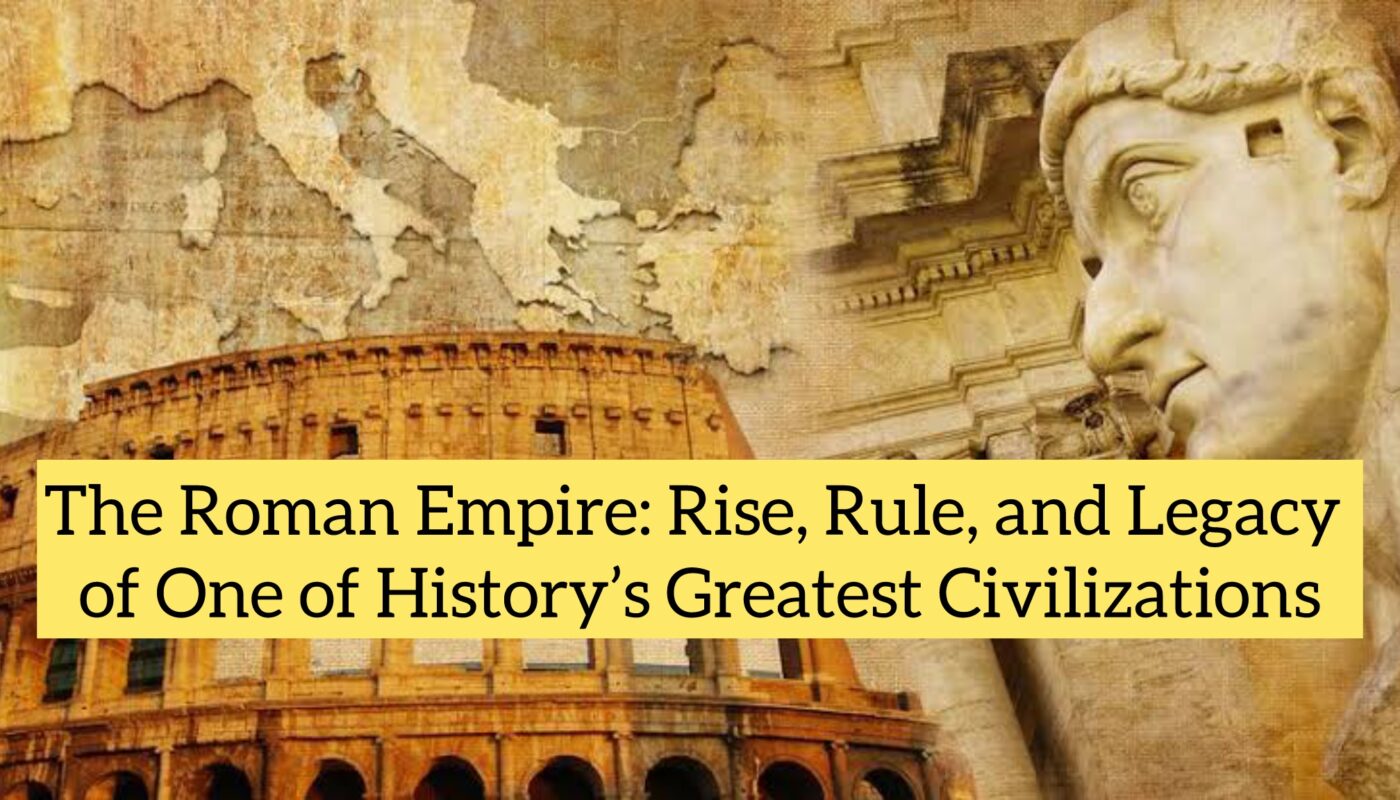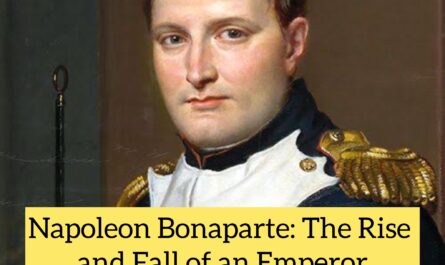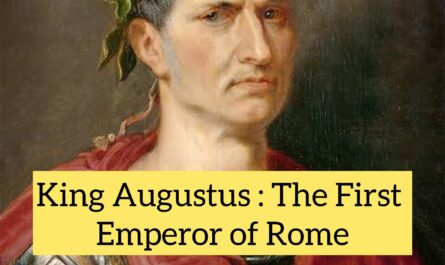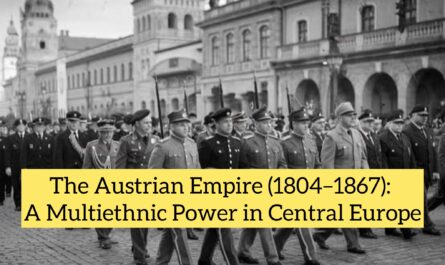Introduction
The Roman Empire was one of the most influential civilizations in world history. Emerging from the Roman Republic in the 1st century BCE, it lasted in various forms for over 1,400 years. At its height, the empire stretched from Britain in the northwest to Egypt in the southeast, controlling vast territories across Europe, Asia, and Africa. Renowned for its military, engineering, legal systems, and cultural achievements, the Roman Empire shaped the development of Western civilization more profoundly than any other ancient state.
Origins and Rise
From Republic to Empire
The Roman Republic (509–27 BCE) was characterized by a complex system of checks and balances, but growing inequality, corruption, and military rivalries led to internal instability.
Key events leading to the empire:
-
Julius Caesar’s dictatorship (49–44 BCE) marked the end of republican ideals.
-
After Caesar’s assassination, a civil war ensued.
-
His adopted heir, Octavian (later Augustus), defeated his rivals and became Rome’s first emperor in 27 BCE, marking the beginning of the Roman Empire.
The Principate (27 BCE – 284 CE)
Augustus and the Founding of the Empire
Augustus (27 BCE – 14 CE) established the Principate, a system where the emperor held ultimate power while maintaining the façade of republican governance. His rule brought stability and ushered in the Pax Romana (Roman Peace), a 200-year period of relative tranquility and prosperity.
Key Emperors of the Early Empire
-
Tiberius, Caligula, Claudius, Nero – The Julio-Claudian dynasty saw both consolidation and excesses.
-
Vespasian and the Flavians – Stabilized the empire after Nero’s fall; built the Colosseum.
-
Trajan (98–117 CE) – Expanded the empire to its greatest extent, including Dacia, Mesopotamia, and parts of Arabia.
-
Hadrian (117–138 CE) – Consolidated and fortified borders, built Hadrian’s Wall in Britain.
-
Marcus Aurelius (161–180 CE) – The “Philosopher Emperor,” known for Meditations, ruled during military pressure and plague.
Government and Administration
Centralized Authority
The emperor wielded supreme executive, military, and religious power. While the Senate continued to exist, it had limited real authority.
Provincial System
The empire was divided into provinces, each governed by officials appointed by the emperor or Senate. Infrastructure such as roads, aqueducts, and cities facilitated control.
Legal Innovation
-
Roman law became a model for legal systems throughout Europe.
-
The Twelve Tables, Corpus Juris Civilis, and other legal frameworks emphasized rights, contracts, and civil procedures.
Society and Economy
Class Structure
-
Senators and equestrians were elite landowners and politicians.
-
Plebeians were the working class, from artisans to merchants.
-
Slaves were widely used in agriculture, households, and administration.
-
Freed slaves (liberti) could rise in status, even becoming wealthy.
Urban Life
-
Cities featured baths, theaters, temples, forums, and amphitheaters.
-
Rome was the largest city in the ancient world, with over a million inhabitants at its peak.
Economy
-
Based on agriculture, trade, and slavery.
-
The empire had a unified currency system and extensive trade networks across the Mediterranean.
Culture and Religion
Art and Architecture
-
Roman architecture included innovations like the arch, dome, aqueduct, and concrete.
-
Major structures: Pantheon, Colosseum, Roman roads, and aqueducts.
Literature and Philosophy
-
Key writers: Virgil (Aeneid), Ovid (Metamorphoses), Cicero, Seneca, and Tacitus.
-
Roman philosophy was heavily influenced by Stoicism and Greek thought.
Religion
-
Initially polytheistic, adopting gods from Greek and local traditions.
-
Emperor worship became a state religion.
-
The rise of Christianity in the 1st–4th centuries CE profoundly changed Roman religious life.
Crisis and Reforms (3rd Century CE)
The 3rd century brought economic collapse, military defeats, civil wars, and plagues. The empire nearly disintegrated during this period.
Notable Reforms
-
Diocletian (r. 284–305) reorganized the empire into a Tetrarchy (rule of four emperors) and introduced economic controls.
-
Divided the empire into Eastern and Western halves for more efficient governance.
The Dominate and Division (284–476 CE)
Constantine the Great (r. 306–337)
-
Reunified the empire briefly.
-
Issued the Edict of Milan (313) legalizing Christianity.
-
Founded Constantinople (modern-day Istanbul) as a new capital.
The Fall of the Western Roman Empire
-
Suffered from barbarian invasions, internal corruption, and economic troubles.
-
In 476 CE, the last Western Roman Emperor, Romulus Augustulus, was deposed by the Germanic chieftain Odoacer, marking the end of the Western Roman Empire.
The Byzantine Empire (Eastern Roman Empire)
While the Western Empire fell, the Eastern Roman Empire (Byzantine Empire) continued for nearly a thousand more years:
-
Capital: Constantinople
-
Peak under Justinian I (527–565), who reconquered parts of the west and codified Roman law (Corpus Juris Civilis).
-
Finally fell to the Ottoman Turks in 1453.
Legacy of the Roman Empire
Legal and Political Systems
-
Roman law influenced modern legal codes in Europe, Latin America, and beyond.
-
Concepts of citizenship, civil rights, and republics trace back to Roman ideas.
Architecture and Engineering
-
Techniques like the arch, vault, dome, and concrete still shape modern construction.
-
Roads and aqueducts demonstrated advanced engineering skills.
Language and Culture
-
Latin, the Roman language, evolved into the Romance languages (Italian, French, Spanish, Portuguese, Romanian).
-
Roman myths, literature, and history remain embedded in Western education and culture.
Christianity
-
Rome became the center of the Catholic Church.
-
The conversion of the empire played a crucial role in spreading Christianity across Europe.
Conclusion
The Roman Empire stands as one of the most remarkable achievements in human history. From humble beginnings as a city-state, Rome grew into a vast empire that united diverse peoples under a single rule. While it ultimately fell to internal and external pressures, its legacy endures in law, language, architecture, religion, and governance. The story of Rome is not only about military conquest, but also about the enduring power of ideas, institutions, and innovation.



